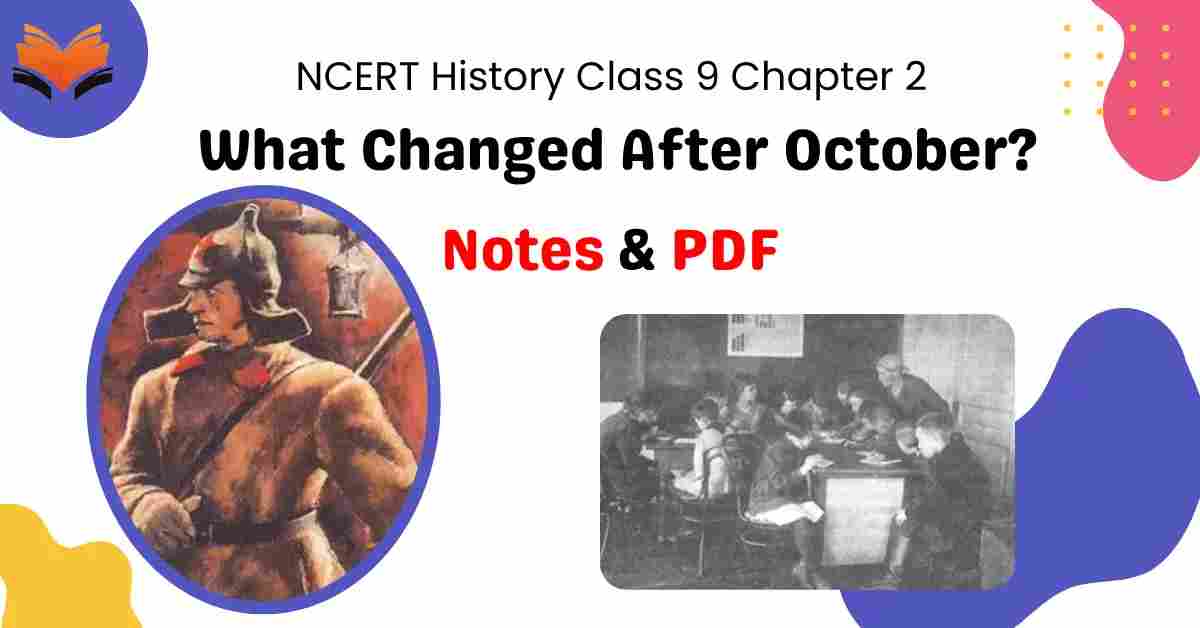NCERT History Class 9 Chapter 2 | What Changed After October Notes & PDF
Topic & sub-topics covered: What Changed After October Revolution and MCQs Questions: Socialism in Europe and the Russian Revolution (All single detail notes are exam-oriented).
We have discussed in-depth and exam-oriented pointers that can be asked in the board exam of class 9th about the “What Changed After October” from the NCERT History notes for class 9th chapter 2nd “Socialism in Europe and the Russian Revolution“.
Download the NCERT History for Class 9th Chapter 2 Socialism in Europe and the Russian Revolution Notes PDF
Looking for clear, concise NCERT notes on Chapter 2: Socialism in Europe and the Russian Revolution? Download the NCERT History Class 9 Chapter 2 Notes PDF and make your revision easier. These notes break down key events, important terms, and timeline-based developments – from the rise of socialism in Europe to how the Russian Revolution changed global politics. Perfect for quick revision before exams, class tests, or just to understand the chapter better. Click to download the free PDF now and study smarter.
What Changed after October?
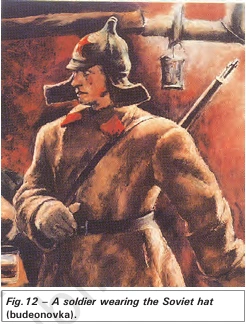
1. Ideological Beliefs and Actions:
- Bolsheviks were completely opposed to private property.
- Most industries and banks were nationalised in November 1917, meaning they were brought under government ownership and control.
- Land was declared as social property.
- Peasants were allowed to seize land from the nobility.
2. Urban Reforms and Social Changes:
- In cities, large houses were divided among families based on need.
- Aristocratic titles were abolished.
- In 1918, new uniforms were introduced to represent the change – Soviet hat (budeonovka) was chosen in a clothing design competition.
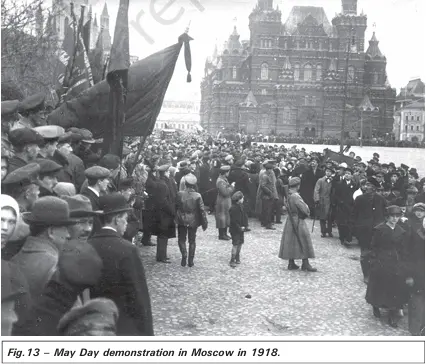
3. Political Developments and Power Shift:
- The Bolshevik Party was renamed the Russian Communist Party (Bolshevik).
- In November 1917, elections to the Constituent Assembly were held, but Bolsheviks failed to win a majority.
- In January 1918, when the Assembly rejected Bolshevik policies, Lenin dissolved it, calling the All Russian Congress of Soviets more democratic.
- March 1918 – The Bolsheviks signed the Treaty of Brest-Litovsk with Germany despite internal opposition.
- Eventually, Russia became a one-party state under Bolshevik rule.
4. Institutions Under Party Control:
- Trade unions were placed under Bolshevik control.
- A secret police force was formed – Cheka, later called OGPU and NKVD.
- These secret police punished critics of Bolshevik rule.
5. Cultural Impact and Censorship:
- Many young writers and artists initially supported the Bolsheviks for their socialist ideals.
- This support led to new experiments in art and architecture.
- However, many became disillusioned due to censorship and suppression of creativity.
Box 3: The October Revolution and the Russian Countryside – Two Perspectives
1. View from a Peasant’s Perspective (Fedor Belov):
- Peasants welcomed the October 25, 1917 revolution as a symbol of free land and end of war.
- Landowner’s property was looted, livestock taken, orchard sold as wood, and land redistributed.
- Represents a violent and radical change welcomed by the rural poor.
2. View from a Landowner’s Family (Serge Schmemann):
- The coup was peaceful in some areas – no violence or cruelty.
- The estate owner and family were treated politely and allowed to keep a few animals.
- Servants ensured their safety and dignity.
- Some villagers wanted to return estates to former owners, showing mixed responses to revolution.
- The writer notes “a conscience in our people”, indicating human compassion amid revolutionary change.
3. Summary Table for Quick Revision:
| Theme | Key Pointers |
|---|---|
| Economy | Nationalisation of industry, banks, and land |
| Society | Redistribution of land and houses; abolishment of titles |
| Politics | Dissolution of Constituent Assembly; one-party rule |
| Control | Party control over trade unions, use of secret police |
| Culture | Initial artistic freedom, followed by censorship |
| Box 3 | Mixed village reactions: violence vs. humane coexistence |
The Civil War
1. Disintegration of the Russian Army:
- The Russian army began to break up after the Bolsheviks ordered land redistribution.
- Peasant-soldiers deserted the army as they wanted to return home and claim land.
2. Opposition to Bolsheviks:
- The Bolshevik uprising was condemned by non-Bolshevik socialists, liberals, and pro-autocracy forces.
- These leaders moved to South Russia and organized military resistance.
3. Civil War in Russia (1918–1919):
- Civil war broke out between:
a. The Reds (Bolsheviks),
b. The Whites (pro-Tsarists),
c. The Greens (Socialist Revolutionaries). - d. The Whites and Greens controlled most of the empire in 1918–1919.
- These anti-Bolshevik groups were supported by foreign powers like:
a. France
b. America
c. Britain
d. Japan - Foreign powers feared the spread of socialism from Russia.
4. Impact of Civil War:
- Civil war led to looting, banditry, and widespread famine in Russia.
- The Whites lost peasant support due to their harsh treatment of peasants who had taken land.
5. Bolshevik Victory by 1920:
- By January 1920, the Bolsheviks controlled most of the former Russian Empire.
- Their success was due to support from non-Russian nationalities and Muslim jadidists.
6. Complications in Non-Russian Regions:
- Cooperation failed where Russian colonists turned Bolshevik.
- In Khiva (Central Asia), Bolsheviks massacred local nationalists in the name of socialism.
- These actions led to confusion about the true nature of the Bolshevik government.
7. Creation of the Soviet Union:
- In December 1922, the Bolsheviks formed the Union of Soviet Socialist Republics (USSR) from the former Russian Empire.
- Most non-Russian nationalities were granted political autonomy in the USSR.
8. Limitations of Autonomy:
- Autonomy was undermined by unpopular policies, like:
a. Discouragement of nomadism
b. Imposition of central decisions - Bolshevik efforts to win over non-Russian groups were only partially successful.
9. Questions can be framed like:
Q 1. Who were the ‘Greens’, ‘Whites’, and ‘Reds’ in the Russian Civil War?
Answer:
- The ‘Reds’ were the Bolsheviks, who supported the socialist revolution and aimed to establish a communist government.
- The ‘Whites’ included pro-Tsarists, liberals, and non-Bolshevik socialists who wanted to restore monarchy or establish democracy. They were supported by foreign powers like Britain, France, Japan, and the USA.
- The ‘Greens’ were Socialist Revolutionaries and peasants who fought for land rights and against both the Reds and the Whites depending on the situation.
Q 2. What were the reasons for the disintegration of the Russian army after 1917?
Answer:
- The Bolsheviks ordered land redistribution, which attracted soldiers (mostly peasants) to desert the army and return home to claim land.
- Many soldiers no longer supported the war and were disillusioned by ongoing violence.
- The chaos of the civil war and conflicting loyalties also led to the army’s breakdown.
- There was lack of leadership and direction, especially after the fall of the Tsar.
Q 3. What led to the formation of the USSR in 1922?
Answer:
- After the civil war, the Bolsheviks gained control over most of the former Russian Empire.
- To unite the various nationalities and regions under one political system, the Union of Soviet Socialist Republics (USSR) was formed in December 1922.
- It was an attempt to give political autonomy to non-Russian nationalities while maintaining central control.
- This was partly to ease tensions and win over ethnic groups who were unsure about Bolshevik rule.
Q 4. Why did non-Bolsheviks lose peasant support?
Answer:
- The ‘Whites’ and other non-Bolsheviks supported private property and often used force against peasants who had taken land.
- Their harsh actions made peasants lose trust and withdraw support.
- On the other hand, Bolsheviks had promised land to the tillers, which appealed more to the rural masses.
- The foreign support for the Whites also made them appear as agents of outside powers.
Q 5. How did the Bolsheviks treat non-Russian nationalities after the revolution?
Answer:
- Initially, the Bolsheviks tried to cooperate with non-Russian nationalities and even supported Muslim reformers (jadidists).
- They later granted political autonomy to these groups within the USSR.
- However, the Bolsheviks also imposed unpopular policies, like discouraging nomadism and enforcing centralized control.
- In places like Khiva, Russian Bolsheviks massacred local nationalists, leading to confusion and fear about the true nature of the Bolshevik regime.
Source B: Central Asia of the October Revolution: Two Views
1. M.N. Roy’s Experience in Central Asia (During Civil War, 1920s):
- M.N. Roy – An Indian revolutionary and founder of the Mexican Communist Party, was in Central Asia during the Russian civil war.
- He described a positive response to the October Revolution from the Kirgiz tribe.
- The Kirgiz chieftain was seen as a benevolent old man, while the youth was enthusiastic about Bolshevism.
- The Kirgiz youth, who spoke Russian, saw the revolution as:
a. An end to Tsarist oppression
b. A return of control to native people - The youth shouted “Long Live the Revolution”, reflecting mass support.
- According to Roy, entire Kirgiz tribes supported the Bolshevik revolution.
2. Opposing View by a Kazakh Leader (1919):
- The Kazakh leader supported the February Revolution but criticized the October Revolution.
- The February Revolution was welcomed because:
a. It ended Tsarist oppression
b. It gave hope of autonomy to the Kirgiz people. - The October Revolution was viewed with:
a. Fear, violence, pillage, and heavy taxation.
b. Dictatorial Bolshevik rule replaced Tsarist rule. - According to him, the same bureaucrats who served the Tsar continued under the Bolsheviks.
- The promise of autonomy remained unfulfilled under the second revolution.
3. Inferred Themes (Can Be Asked in Conceptual Questions):
- The revolution was perceived differently by various groups and regions.
- For some like the Kirgiz youth, it was liberation and empowerment.
- For others like the Kazakh leader, it brought repression under a new name.
- The continuity of oppressive structures, even after revolution, highlights regional disillusionment.
4. Possible Board Exam Questions:
Q1: Who was M.N. Roy and what was his observation about the Revolution in Central Asia?
Answer: M.N. Roy was an Indian revolutionary and the founder of the Mexican Communist Party. He was also a prominent leader of the Comintern. During the Russian civil war in the 1920s, he visited Central Asia and observed the impact of the October Revolution. According to him, the local Kirgiz people, especially the youth, supported the revolution because it freed them from Tsarist rule. They believed it gave them control over their homeland again, and many joined the revolutionary cause with enthusiasm.
Q2: How did the Kirgiz people respond to the October Revolution, according to Roy?
Answer: According to M.N. Roy, the Kirgiz people welcomed the October Revolution with great hope and enthusiasm. A young Kirgiz, who had learned Russian, expressed joy over the fall of the Tsar and believed the revolution had restored their freedom. He even shouted, “Long Live the Revolution,” and the entire tribe supported this sentiment. Roy felt that the revolution made the Kirgiz feel like the rightful masters of their own land again.
Q3: Why did the Kazakh leader view the October Revolution negatively?
Answer: The Kazakh leader viewed the October Revolution with fear and disappointment. While he supported the February Revolution because it brought an end to Tsarist oppression and raised hopes for autonomy, he criticized the October Revolution. He felt it brought violence, looting, and heavy taxes. Instead of real change, the same group of former Tsarist officials continued to dominate under the new Bolshevik government. In his view, the promises of freedom were replaced by a new form of dictatorship.
Q4: Explain the contrasting views of the Kirgiz youth and the Kazakh leader about the Russian Revolution.
Answer: The Kirgiz youth, as described by M.N. Roy, was full of hope and excitement about the October Revolution. He believed it gave freedom back to his people and ended the control of the Tsar’s generals. The entire tribe seemed to support the revolution enthusiastically.
In contrast, the Kazakh leader was disillusioned by the October Revolution. While he appreciated the February Revolution for ending Tsarist rule, he felt the second revolution brought fear, violence, and more oppression. According to him, the same bureaucrats stayed in power, and there was little real change.
These two views show how different groups experienced the revolution in very different ways.
Q5: What were the effects of the October Revolution in Central Asia, as reported by local leaders?
Answer: The effects of the October Revolution in Central Asia were mixed. According to M.N. Roy, it was seen as a positive change by the Kirgiz people, who felt liberated and supported the revolution. On the other hand, the Kazakh leader reported negative outcomes like violence, looting, forced taxes, and the rise of a new dictatorship. Many local people felt betrayed, as they expected freedom and autonomy but got more oppression under a new regime. This shows that the revolution had both supporters and critics in Central Asia.
Making a Socialist Society
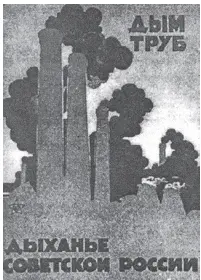
1. Economic Policies of the Bolsheviks:
- Industries and banks were nationalised during the civil war to keep them under state control.
- Peasants were allowed to cultivate socialised lands.
- Confiscated lands were used to show the benefits of collective farming.
2. Centralised Economic Planning:
- A system of centralised planning was introduced.
- The government launched Five Year Plans to set long-term economic goals.
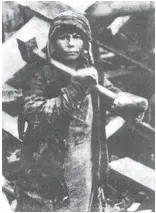
- Officials assessed the economy and fixed targets for five-year periods.
- Prices were fixed by the state to ensure industrial growth during the first two Plans:
a. First Plan: 1927–1932
b. Second Plan: 1933–1938 - This system led to significant economic growth, especially in oil, coal, and steel production, which doubled between 1929 and 1933.
- New industrial cities were built as part of rapid industrialisation.
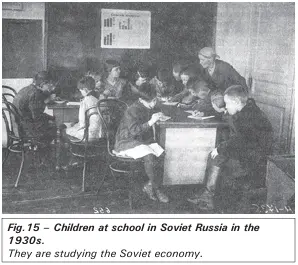
3. Working and Living Conditions:
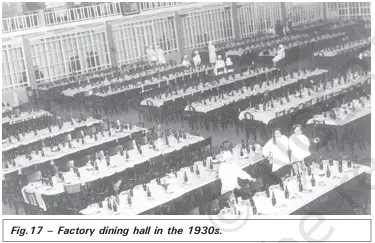
- Rapid industrial growth led to poor working conditions.
- Example: In Magnitogorsk, a steel plant was built in 3 years, but:
a. Workers faced harsh living conditions and extreme cold.
b. 550 work stoppages occurred in the first year alone due to dissatisfaction.
c. Basic needs like toilets were difficult to access in winter, highlighting poor planning.
4. Social Welfare Measures:
- An extended schooling system was developed to educate the masses.
- University admissions were opened for workers and peasants.
- Crèches in factories were set up for children of working women.
- Cheap public healthcare was introduced.
- Model living quarters were created for workers.
- Despite efforts, benefits were unevenly distributed due to limited government resources.
Box 4: Socialist Cultivation in a Ukrainian Village
- A commune of 13 families (70 people total) was established using confiscated farms.
- Farm tools and resources were shared among all members.
- Meals were communal and income was distributed based on cooperative communism.
- All property and earnings were collectively owned and used.
Source C: A Glimpse into Soviet Childhood (1933)
- Letter from a 13-year-old factory worker reveals the struggles of poor Soviet families.
- The child’s father died fighting for the worker’s cause, and his mother was ailing.
- Despite being in Class 5, he had to leave school due to poverty and work in a factory.
- The letter references Lenin’s ideal of “studying, studying, studying”, but economic hardship made it impossible.
- Shows the gap between revolutionary ideals and ground reality.
| Theme | Key Point |
|---|---|
| Nationalisation | Industries, banks under state control; peasants allowed to cultivate socialised land. |
| Planning | Five Year Plans with fixed targets (1927–1932, 1933–1938). |
| Industrial Growth | Oil, coal, steel production doubled between 1929 and 1933. |
| Worker Conditions | Harsh living and working conditions (e.g., Magnitogorsk). |
| Social Welfare | Education, healthcare, crèches, model housing – but uneven access. |
| Collective Farming | Communes practiced cooperative communism with shared tools and income. |
| Reality Check | Children’s letter shows poverty, lack of access to education, and failure to meet Lenin’s dream. |
Stalinism and Collectivisation

1. Reasons for Collectivisation:
- Grain crisis (1927–1928): Soviet towns faced acute shortages of grain.
- Government price control: Peasants refused to sell grain at low government-fixed prices.
- Stalin’s belief: Rich peasants (kulaks) and traders were hoarding grain for speculation.
2. Emergency Measures by Stalin:
- Stalin introduced emergency policies to stop speculation and ensure grain supply.
- In 1928, Party members raided kulaks and enforced grain collections.
- Kulaks = well-to-do peasants who were targeted for hoarding and resistance.
3. Reasons for Collectivising Agriculture:
- Grain shortages were linked to the small size of peasant landholdings.
- Modernising agriculture required large farms, machinery, and state control.
- The goal was to eliminate kulaks and create state-controlled collective farms (kolkhoz).
4. Features of Collectivisation Programme:
- Started in 1929, all peasants were forced into kolkhozes (collective farms).
- Land and implements were transferred to collective ownership.
- Kolkhoz profits were shared among workers.
5. Resistance and Consequences:
- Peasants resisted collectivisation by destroying their own livestock.
- Between 1929–1931, the number of cattle fell by one-third.
- Resisting peasants were deported, exiled, or punished harshly.
- Many peasants claimed they were not rich or anti-socialist, just opposed to kolkhozes.
- Stalin allowed some private farming, but treated such farmers harshly.
6. Impact of Collectivisation:
- No immediate increase in production despite collectivisation.
- 1930–1933 famine caused by bad harvests — over 4 million deaths.
- Collectivisation led to one of the worst famines in Soviet history.
7. Criticism & Political Repression:
- Many Party members criticised collectivisation and confusion in industrial planning.
- Stalin accused critics of conspiracy and arrested over 2 million people by 1939.
- Many were innocent, but forced to confess under torture and were executed.
Source D: Government Report on Peasant Uprisings (1930)
- Mass peasant insurrections occurred in Ukraine due to harsh collectivisation.
- Peasants demanded return of collectivised grain, tools, and livestock.
- Between Feb–March 1930:
a. 25,000 arrested
b. 656 executed
c. 3,673 imprisoned
d. 5,580 exiled
Source E: Letter from a Peasant (1932–1937)
- Independent cultivator Afanasii Frebenev faced heavy taxes and confiscation of property.
- Between 1932–1937, he lost:
a. Livestock
b. Tools
c. Furniture
d. Buildings - His property was sold to pay taxes, and part of it was bought by the kolkhoz.
Exam-Tip Based Additions
- Name of Stalin’s farm policy: Collectivisation
- What were Kolkhozes? Collective farms run by the state.
- Impact on livestock: Cattle population dropped by 1/3.
- Year collectivisation started: 1929
- Outcome of peasant resistance: Mass repression, exile, and famine.
New words:
- Autonomy – The right to govern themselves.
- Nomadism – Lifestyle of those who do not live in one place but move from area to area to earn their living.
Next & Previous Topics of NCERT/CBSE History Class 9 Chapter 2: Socialism in Europe and the Russian Revolution
| Topics No. | Topics Name |
|---|---|
| 1 | The Age of Social Change |
| 2 | The Russian Revolution |
| 3 | The February Revolution in Petrograd |
| 4 | What Changed After October? |
| 5 | The Global Influence of the Russian Revolution and the USSR |
MCQs on NCERT History Class 9 Chapter 2 Topic – What Changed After October?
Here are the top exam-oriented MCQ-type questions on “What Changed After October” that you should prepare for your CBSE or state board exams:
Question 1. What was the Bolshevik position on private property?
a) Allowed for public-private partnership
b) Encouraged private entrepreneurship
c) Opposed it completely
d) Permitted for peasants only
Answer: c) Opposed it completely
Question 2. What happened to industries and banks in November 1917?
a) They were privatised
b) Workers took control
c) Nationalised by the government
d) Sold to foreign investors
Answer: c) Nationalised by the government
Question 3. What did declaring land as ‘social property’ mean?
a) Land belonged to the local governments
b) Only nobles could use the land
c) Peasants could seize land from nobles
d) Peasants had to return land to the state
Answer: c) Peasants could seize land from nobles
Question 4. What change was made to large houses in cities by the Bolsheviks?
a) They were destroyed
b) They were partitioned according to family requirements
c) They were turned into museums
d) Given to party members only
Answer: b) They were partitioned according to family requirements
Question 5. Which item was chosen as a symbol of the new army uniform in 1918?
a) The red scarf
b) The Lenin cap
c) The budeonovka hat
d) The worker’s coat
Answer: c) The budeonovka hat
Question 6. What did the Bolshevik Party rename itself as?
a) Russian Socialist Party
b) Communist Party of Russia
c) Russian Communist Party (Bolshevik)
d) Soviet Democratic Party
Answer: c) Russian Communist Party (Bolshevik)
Question 7. Why was the Constituent Assembly dismissed by Lenin in 1918?
a) It supported the Tsar
b) It rejected Bolshevik measures
c) It was not elected
d) It failed to meet
Answer: b) It rejected Bolshevik measures
Question 8. What became the Parliament of the country under Bolsheviks?
a) Duma
b) Politburo
c) Central Committee
d) All Russian Congress of Soviets
Answer: d) All Russian Congress of Soviets
Question 9. What was the role of the Cheka and later NKVD?
a) Economic advisors
b) Propaganda agents
c) Secret police punishing critics
d) Education officers
Answer: c) Secret police punishing critics
Question 10. Why did some artists become disillusioned with the Bolsheviks?
a) Lack of funding
b) Political censorship
c) No public support
d) Banning of modern art
Answer: b) Political censorship
Question 11. Who were the ‘greens’ in the Russian Civil War?
a) Peasants for Tsar
b) Socialist Revolutionaries
c) Army officers
d) Bolsheviks
Answer: b) Socialist Revolutionaries
Question 12. What led to the Russian army breaking up after land redistribution?
a) Mutiny of generals
b) Peasants in army wanted to return home
c) Foreign invasion
d) Death of Lenin
Answer: b) Peasants in army wanted to return home
Question 13. Which countries supported the ‘whites’ during the civil war?
a) Germany and Italy
b) USA, France, Japan, Britain
c) India and China
d) Spain and Turkey
Answer: b) USA, France, Japan, Britain
Question 14. What weakened the support for the non-Bolsheviks?
a) Alliances with peasants
b) Return of monarchy
c) Harsh treatment of peasants
d) Peace treaties with Germany
Answer: c) Harsh treatment of peasants
Question 15. When was the USSR formed?
a) 1917
b) 1918
c) 1920
d) 1922
Answer: d) 1922
Question 16. What was the policy of political autonomy meant to do?
a) Win over non-Russian nationalities
b) Give full independence
c) Set up separate countries
d) Let Tsar rule again
Answer: a) Win over non-Russian nationalities
Question 17. Which policy was unpopular among nomadic communities?
a) Collectivisation
b) Peace with Germany
c) Harsh discouragement of nomadism
d) Industrialisation
Answer: c) Harsh discouragement of nomadism
Question 18. What did the Five Year Plans focus on?
a) Private trade
b) Agricultural reforms
c) Industrial growth
d) Military expansion
Answer: c) Industrial growth
Question 19. Which of the following increased between 1929–1933?
a) Only agriculture
b) Only defence
c) Oil, coal, and steel production
d) Consumer goods
Answer: c) Oil, coal, and steel production
Question 20. Why were there 550 stoppages of work in Magnitogorsk?
a) Worker strikes for freedom
b) Poor living and working conditions
c) Lack of food supply
d) Absence of technology
Answer: b) Poor living and working conditions
Question 21. Which reform helped children of women factory workers?
a) Free food
b) Crèches in factories
c) Free schooling
d) Paid maternity leave
Answer: b) Crèches in factories
Question 22. What was one reason behind collectivisation?
a) Shortage of labour
b) Small peasant holdings hindered modernisation
c) Collapse of the economy
d) Advice from Western economists
Answer: b) Small peasant holdings hindered modernisation
Question 23. What happened to those who resisted collectivisation?
a) They were ignored
b) They were deported and exiled
c) They were made party members
d) They were relocated abroad
Answer: b) They were deported and exiled
Question 24. What was the impact of resistance on livestock?
a) It remained unchanged
b) It increased
c) One-third of cattle were destroyed
d) Livestock was nationalised
Answer: c) One-third of cattle were destroyed
Question 25. Which economic crisis followed collectivisation?
a) Hyperinflation
b) Agricultural boom
c) The 1930–33 famine
d) Oil crisis
Answer: c) The 1930–33 famine
Question 26. What happened to those accused of conspiracy during Stalin’s purges?
a) Sent abroad
b) Put on trial fairly
c) Tortured and forced to confess
d) Given second chance
Answer: c) Tortured and forced to confess
Question 27. By 1939, how many people were in labour camps or prisons?
a) 50,000
b) 2 million+
c) 500,000
d) 100,000
Answer: b) 2 million+

